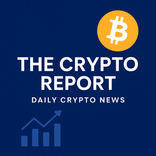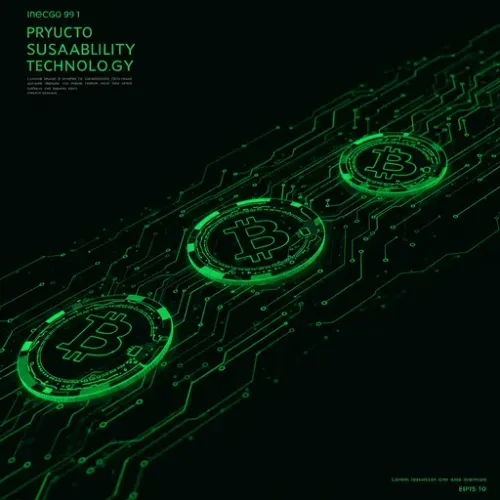EU exploring Ethereum, Solana for digital euro launch: FT

The Crypto Report
Daily crypto news
The Digital Euro's Bold Leap: Why Europe is Embracing Ethereum and Solana
A pivotal shift is underway in the European Union's journey toward a digital euro. Recent reports from the Financial Times indicate that the European Central Bank (ECB) is actively exploring major public blockchain networks, specifically Ethereum and Solana, as foundational technologies for its upcoming digital currency. This potential move marks a profound departure from the private, centralized models favored by some other nations, notably China's CBDC, and signals a strategic embrace of open, decentralized innovation.
From Closed Doors to Open Networks: The Public Blockchain Advantage
Historically, the conversation around central bank digital currencies (CBDCs) often leaned towards private, permissioned blockchains, where access and data are restricted to authorized entities. However, the EU's reported exploration of Ethereum and Solana champions a different philosophy. Public blockchains are, by their very nature, open and accessible to everyone. This fundamental distinction brings several compelling advantages:
- Enhanced Transparency: Transactions and network activity on public blockchains are typically verifiable by all participants, fostering a level of transparency often lacking in private systems.
- Greater Interoperability: Opting for established public networks like Ethereum or Solana could unlock unparalleled interoperability with the burgeoning Web3 ecosystem. This means a digital euro could seamlessly integrate with existing decentralized applications (dApps), smart contracts, and a vast array of blockchain-based services.
- Innovation Catalyst: By building on an open platform, the EU could inadvertently foster a wave of innovation. Developers and businesses would have the tools to build new financial products and services on top of the digital euro, leveraging the power of these public blockchains.
This openness stands in stark contrast to a private digital currency, which one source involved in the discussions likened more to China's CBDC than to the public-run stablecoins developed by private US companies like Circle. The shift demonstrates a growing understanding within the EU of the long-term benefits of decentralized infrastructure.
A Strategic Response to the Stablecoin Surge
Beyond the technological benefits, the EU's potential pivot to public blockchains is also driven by significant geopolitical and financial concerns. Europe has expressed increasing unease regarding the dominance of US dollar-pegged stablecoins, which currently account for a staggering 98% of the stablecoin market. The Trump administration's push for US stablecoins has heightened these concerns, prompting the ECB to seek ways to safeguard European financial autonomy.
ECB Executive Board member Piero Cipollone previously advocated for limiting stablecoin usage in Europe by introducing a digital euro. The adoption of a public-blockchain-based digital euro could serve as a robust counter-measure, providing a sovereign, secure, and technologically advanced alternative to foreign-dominated stablecoins, thereby reducing dependency and strengthening the euro's digital footprint globally.
What This Means for European Citizens, Businesses, and Developers
If the EU moves forward with this public blockchain strategy, the implications could be far-reaching:
- For Consumers: Imagine a digital euro that integrates effortlessly with digital wallets, facilitates instant cross-border payments at lower costs, and provides enhanced privacy features through innovative blockchain solutions. The user experience could be significantly more fluid and efficient.
- For Businesses: Companies could leverage smart contracts for automated payments, supply chain finance, and new business models built on a programmable digital currency. This could reduce operational costs and open up new markets.
- For Developers: The adoption of Ethereum or Solana would provide a familiar and robust development environment. This could attract a wave of talent and investment into the European blockchain ecosystem, fostering innovation and creating new job opportunities.
Juan Ignacio Ibañez, general secretary of MiCA Crypto Alliance, notes the "potential for a public-blockchain-based digital euro to interoperate better with all the infrastructure being developed on blockchain these years." This is a significant boon for the entire digital economy.
The Road Ahead: Navigating Opportunities and Challenges
While the prospect of a public digital euro is exciting, it's not without its complexities. Ibañez also points to a potential "stronger state interest in influencing blockchain governance." This highlights the delicate balance between leveraging decentralized technology and ensuring governmental oversight and stability. Regulatory frameworks will need to evolve to support such an ambitious project, ensuring consumer protection, financial stability, and market integrity.
The ECB has yet to make a final decision on the digital euro project, with a definitive choice on whether to issue a digital euro expected by the end of 2025. However, the direction of exploration is clear: Europe is looking towards the open, innovative, and increasingly decentralized future of digital finance.
This exploration of Ethereum and Solana is more than just a technical choice; it's a statement about Europe's vision for financial sovereignty and its commitment to leading in the digital age. The coming months will be crucial as the continent potentially charts a course that could redefine digital currency as we know it.

The Crypto Report
Author bio: Daily crypto news
